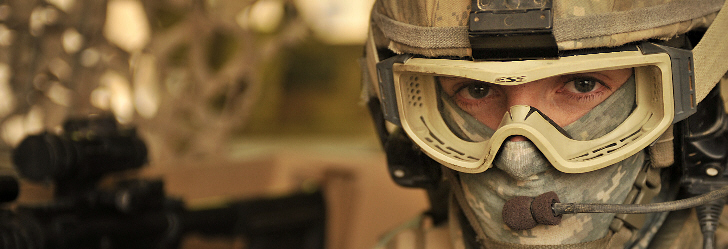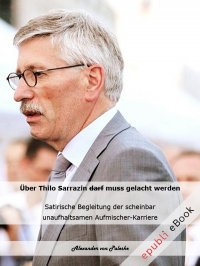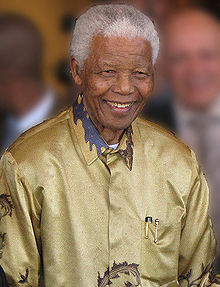The Sahara's new cargo: drugs and radicalism
A number of incidents in recent months suggest that this new reality has begun to take root. In December 2009, three alleged al-Qaida operatives of Malian origin were arrested in Ghana on “narco-terrorism” charges and sent to the United States under the auspices of the Drugs Enforcement Administration (DEA), following a four-month tracking operation (see James M Dorsey, “Drugs Money Fills al Qaeda Coffers in West Africa”, Deutsche Welle, 22 January 2010). In March 2010, a number of al-Qaida affiliates were charged in Mauritania with drug-trafficking offences involving the transportation of cocaine and marijuana.
Behind these immediate events lies a spreading implantation of the drugs trade in parts of the continent. By the mid-2000s at latest, leading cocaine-smugglers in Latin America had begun systematically using west Africa as a staging-post for the European market. This is estimated to consume about 300 tonnes of the white powder per year at present, but it has huge potential to increase further (see Emmanuelle Bernard, “Guinea-Bissau: drug boom, lost hope”, 23 October 2008).
At first, the traffickers’ strategy was to take wholesale cargoes to coastal states in west Africa and stockpile it in places where policing is inadequate and politicians can be bought cheaply. From there, cocaine could be repackaged and re-exported to Europe. There were already well-established west African cocaine-smugglers (with Nigerians and Ghanaians in the forefront), whose speciality had always been to access the European market by sending large numbers of couriers by air, each carrying a kilo or less - the notorious “swallowers and stuffers”. The major west African traders provided local services to the Latin Americans; some individual local traders were taking small quantities overland through the Sahara to north Africa, but there was no real evidence of a wholesale trade through the desert.
The new cargo
The signs of a shift in the trade’s character were evident by January 2008, when the Malian army fought a battle in the north of the country with a convoy of vehicles manned by smugglers carrying no less than three-quarters of a tonne of cocaine eastward. The Malian authorities confiscated the cocaine…which promptly disappeared. Since then there have been in terceptions of other convoys carrying cocaine in four-wheel-drive vehicles from the Atlantic coast of Africa towards the heart of the Sahara. The smugglers are well-armed and equipped with satellite-phones and global-positioning systems (GPS).
They have the confidence to match their sophisticated technology: they have even placed landmines at strategic locations to discourage interception. No one on the right side of the law knows where their cargoes end up, but most probably they go to Libya or Egypt for onward transport to Europe, perhaps in cargo-containers.
An investigative breakthrough came in November 2009, when the Malians found in a remote region the wreck of a Boeing cargo-aircraft that had brought in a huge quantity of cocaine from Venezuela. Law-enforcement officers were shocked: here was evidence of a huge cocaine trade that by-passed the coast completely and went straight to desert smuggling-networks (see Jamie Doward, “Drug seizures in west Africa prompt fears of terrorist links”, Observer, 29 November 2009).
Indeed, the Sahara has always been prime territory for traffickers. There aren’t too many other ways of earning a living there. Until recently the main high-value commodity was cigarettes, hauled overland from the Atlantic coast to north Africa. But once a gang acquires the necessary transport and logistics, it can switch to any cargo; and the rising risks of smuggling cocaine by air and by sea to Europe make it more tempting to transport cargo overland to north Africa and then smuggle it over the Mediterranean (using the traditional hashish-smugglers’ routes or developing new ones).
Who makes the really big profits on the desert-run is a closely guarded secret; but even if the Saharan drivers only get a minor cut, the result is a lot of money in a region that has always been desperately poor.
The Sahara ocean
The Sahara is home to more than smugglers. Today it has also become a focus for the group known as “Al-Qaida in the Islamic Maghreb” (AQIM). This is the new brand-name (adopted in 2006) for the old Algerian Islamist movement, the Salafist Group for Preaching and Combat (GSPC), one of the toughest of the factions fighting against the Algerian government in an atrocious civil war that lasted through the 1990s and beyond.
The GSPC seemed at one point to have been more or less defeated; but after the 9/11 attacks and the United States invasion of Afghanistan, US generals insisted that the Sahara represented a possible new location for Islamist radicals relocating after being flushed out of their Afghan camps. The generals were later to say that some suicide-bombers operating in Iraq had trained in the same camps.
Most observers were rather sceptical; but there was no doubt that Algerian Islamists had trained at al-Qaida camps in Afghanistan and that Algerians were present at the founding of al-Qaida. There were also plenty of radical Islamist preachers wandering through the countries just south of the Sahara, usually with funding from the Gulf states or Pakistan, but there is not much new about this. The conventional wisdom has always been that west African Muslims are dominated by brotherhoods devoted to Sufi mysticism and have little truck with Saudi or south Asian ideas of doctrinal purity (see Sean Hanretta, Islam and Social Change in French West Africa: History of an Emancipatory Community [Cambridge University Press, 2009]).
The idea of the Sahara as a new centre of Islamist radicalism seemed to many people to be a case of American strategists finding terrorists under every sand-dune at a time when the “global war on terror” made this a good way of advancing a military career. The US military set up a series of schemes to train the security forces in countries bordering the Sahara and launched joint military exercises called Operation Flintlock. In 2004, I witnessed US marines teaching Nigérien troops how to clear a house of enemies and practicing with them on the rifle-range.
Yet the big empty spaces of the Sahara have a curious effect of linking places as far away as Darfur and the Atlantic coast. And there’s no doubt that there has been a distinct revival of Islamist activism in the Sahara of which the rebranding of the Algerian radicals as AQIM is just one part. AQIM is more radical and ideological than traditional Saharan bandits. In December 2007, AQIM blew up the United Nations building in Algiers and attacked a law court, killing forty-one people. In the sixteen months since there has been a spate of kidnappings, the beheading of a British tourist, the murder of a top Malian intelligence officer, and more violence besides.
It is unclear what AQIM actually consists of or how it relates to the Tuareg population of the Sahara, which traditionally has had little truck with Islamism. AQIM is said to contain at least three rather disparate elements; these include the Mauritanian Islamists who attacked the Israeli embassy in Nouakchott in February 2008 as well as killing some French tourists, and the remnants of the old Algerian movement (which are operationally rather separate). In between are various more traditional bandits who use the AQIM brand-name but have little ideological fervour.
Some radical groups fight each other for turf, but whether they are AQIM or freelancers is unclear. Some recent reports from northern Niger suggest that AQIM regularly recruits west African migrants who get lost in the desert heading for north Africa. AQIM also encourages others to take western hostages and hand them over. By all reliable accounts, the current situation is a rather mixed picture where politics and commerce are fused (see Philip Sherwell, “Cocaine, kidnapping and the Al-Qaeda cash squeeze”, Telegraph, 6 March 2010).
Beyond the fortress
An additional element is the radicalisation of mosques and universities in Niger and Mali by radical Islamists, some of them influenced by Sudan. The major purveyors of influence in the Sahara, including Algeria’s formidable military intelligence service and Colonel Gadaffi’s Libya, have never attempted to police borders in the way that the US strives for, but tend to prefer more indirect methods of sponsorship and cooptation. The fact that some of the cocaine-carrying jeeps intercepted by Malian and Nigérien soldiers in the desert have been imported brand-new through Algiers suggests that north African governments may be playing a more complex game than appears. There is a lot of money at stake.
All of this cannot leave Europeans indifferent. The Sahara’s status as a transit-route for cocaine coming into Europe makes the region a major security issue for European Union countries. And it was groups with roots in north Africa that carried out the metro-bombings in Paris and the train-bombings in Madrid. Until now, Europe’s main effort in the region has been to stop African boat-people from entering the EU, making the Sahara into the first line of defence of “fortress Europe”. But technical means are not enough. The Europeans need to focus much more attention on what really happens in the Sahara.
sfux - 12. Sep, 21:17 Article 2384x read
















































